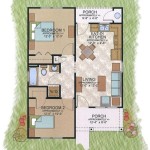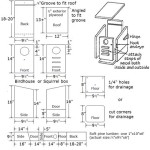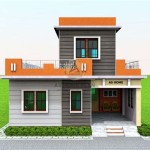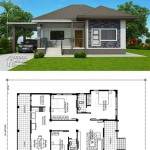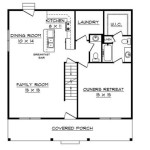House Plans For Narrow Lots refer to architectural blueprints specifically designed for constructing houses on elongated, narrow parcels of land. These plans prioritize efficient space utilization and vertical expansion to accommodate the desired living space within the constrained lot dimensions. An example of a house plan for a narrow lot is the “Skinny House” in London, which measures just 5.8 feet wide but spans 50 feet in length, providing three full floors of living space.
When designing a house for a narrow lot, careful consideration must be given to maximizing natural light, airflow, and privacy. Innovative architectural techniques such as skylights, courtyards, and open floor plans are often incorporated to create a sense of spaciousness and minimize the feeling of confinement. As we delve into the main body of this article, we will explore various house plans for narrow lots, discussing their unique design features and advantages.
When designing houses for narrow lots, several important points should be considered:
- Maximize natural light
- Ensure proper airflow
- Prioritize privacy
- Utilize vertical space
- Incorporate open floor plans
- Consider courtyards or skylights
- Address parking and access
- Comply with local regulations
- Seek professional architectural guidance
By carefully addressing these points, house plans for narrow lots can create comfortable, functional, and aesthetically pleasing living spaces that make the most of the available land area.
Maximize natural light
Natural light plays a crucial role in creating a comfortable and inviting living environment. In the context of house plans for narrow lots, maximizing natural light is essential for several reasons. Firstly, it reduces the reliance on artificial lighting, leading to energy savings and a more sustainable home. Secondly, natural light has numerous health benefits, including improved mood, increased vitamin D production, and better sleep patterns. Moreover, ample natural light makes a space feel more spacious and airy, which is especially important in narrow homes where there may be limited square footage.
- Large windows and doors: Installing large windows and doors along the length of the house allows natural light to penetrate deep into the interior spaces. This is particularly effective for narrow homes that may not have as many exterior walls as wider homes.
- Skylights and clerestory windows: Skylights and clerestory windows are excellent options for bringing natural light into the center of a narrow home. Skylights can be placed on the roof to provide overhead lighting, while clerestory windows are tall, narrow windows placed high on the walls to allow light to enter from above.
- Light-colored interiors: Using light-colored paint, flooring, and furnishings helps to reflect and distribute natural light throughout the home. Darker colors absorb light, making a space feel smaller and dimmer.
- Mirrors and reflective surfaces: Mirrors and other reflective surfaces, such as polished metal or glass, can bounce light around a room, making it feel brighter and more spacious.
By incorporating these strategies into the design of a house for a narrow lot, architects can create homes that are filled with natural light, creating a more comfortable, healthier, and visually appealing living environment.
Ensure proper airflow
Proper airflow is essential for maintaining a healthy and comfortable living environment. In house plans for narrow lots, ensuring proper airflow can be challenging due to the limited width of the home. However, there are several design strategies that can be employed to promote good air circulation:
- Cross-ventilation: Cross-ventilation is the movement of air through a space from one side to the other. In narrow homes, cross-ventilation can be achieved by placing windows and doors on opposite walls of a room. This allows air to flow freely through the space, carrying away stale air and bringing in fresh air.
- Stack ventilation: Stack ventilation is the movement of air through a space vertically. In narrow homes, stack ventilation can be achieved by placing windows or vents at different levels of the home. This creates a natural airflow, with warm air rising and escaping through higher vents while cooler air enters through lower vents.
- Mechanical ventilation: In some cases, mechanical ventilation may be necessary to supplement natural ventilation. This can be achieved through the use of fans, exhaust systems, or air conditioning units. Mechanical ventilation can help to remove stale air, introduce fresh air, and control humidity levels.
- Courtyards and lightwells: Courtyards and lightwells are open spaces that are surrounded by buildings or walls. They can be used to bring natural light and ventilation into the center of a narrow home. Courtyards and lightwells can also be used to create a sense of outdoor space within the home.
By incorporating these strategies into the design of a house for a narrow lot, architects can create homes that have proper airflow, promoting a healthy and comfortable living environment.
Prioritize privacy
Privacy is an important consideration for any home, but it can be especially challenging to achieve in house plans for narrow lots. Due to the limited width of the home, there may be less space for setbacks and outdoor buffers. However, there are several design strategies that can be employed to prioritize privacy in narrow lot homes:
- Setbacks and buffers: Setbacks are the distances between a building and the property lines. Buffers are areas of landscaping or other open space that can be used to create a sense of separation between a home and its neighbors. In narrow lot homes, setbacks and buffers can be used to create a sense of privacy from the street and from neighboring properties.
- Fencing and walls: Fencing and walls can be used to create a physical barrier between a home and its surroundings. Fences and walls can be made from a variety of materials, including wood, metal, or concrete. The height and opacity of the fence or wall will determine the level of privacy it provides.
- Window placement: The placement of windows can also be used to prioritize privacy. Windows that are placed high on the walls or that are obscured by landscaping can help to reduce the amount of visibility into the home from the street or from neighboring properties.
- Landscaping: Landscaping can be used to create a sense of privacy and seclusion around a home. Trees, shrubs, and other plants can be used to block views into the home and to create a buffer between the home and its surroundings.
By incorporating these strategies into the design of a house for a narrow lot, architects can create homes that are private and secluded, even on narrow lots.
Utilize vertical space
One of the most effective ways to maximize space in a narrow lot home is to utilize vertical space. This can be achieved through the use of multi-story designs, lofts, and other vertical elements.
- Multi-story designs: Multi-story designs are a great way to add square footage to a narrow lot home without increasing the footprint of the home. Two-story and three-story homes are common in narrow lot developments, and they can provide ample space for bedrooms, bathrooms, and other living areas.
- Lofts: Lofts are another great way to utilize vertical space in a narrow lot home. Lofts are typically open spaces that are located on the upper level of a home. They can be used for a variety of purposes, such as bedrooms, offices, or playrooms.
- High ceilings: High ceilings can make a narrow lot home feel more spacious and airy. Cathedral ceilings and vaulted ceilings are popular choices for narrow lot homes, as they can create a sense of openness and grandeur.
- Vertical storage: Vertical storage solutions, such as built-in shelves and cabinets, can help to maximize storage space in a narrow lot home. Vertical storage solutions can be used to store a variety of items, such as books, clothes, and household supplies.
By incorporating these strategies into the design of a house for a narrow lot, architects can create homes that are spacious and functional, even on narrow lots.
Incorporate open floor plans
Open floor plans are a great way to make a narrow lot home feel more spacious and inviting. Open floor plans eliminate the walls between the kitchen, dining room, and living room, creating one large, open space. This can make the home feel larger and more airy, and it can also improve the flow of traffic.
In addition to making the home feel more spacious, open floor plans can also improve the functionality of the home. For example, an open floor plan can make it easier to entertain guests, as people can move freely between the kitchen, dining room, and living room. Open floor plans can also make it easier to supervise children, as parents can keep an eye on their children from anywhere in the main living area.
There are a few things to keep in mind when designing an open floor plan for a narrow lot home. First, it is important to use furniture that is appropriately scaled for the space. Oversized furniture can make a narrow lot home feel even more cramped. Second, it is important to use area rugs to define different areas of the open floor plan. This can help to create a sense of separation between the different areas of the home, and it can also help to reduce noise levels.
Overall, open floor plans are a great way to make a narrow lot home feel more spacious, inviting, and functional. By following the tips above, you can create an open floor plan that is perfect for your needs.
In addition to the benefits listed above, open floor plans can also be more energy-efficient than traditional floor plans. This is because open floor plans allow for better air circulation, which can reduce the need for heating and cooling. Open floor plans can also be more accessible for people with disabilities, as they eliminate the need for steps or ramps between different rooms.
Consider courtyards or skylights
Courtyards and skylights are two great ways to bring natural light and ventilation into a narrow lot home. Courtyards are open-air spaces that are surrounded by buildings or walls. They can be used to create a sense of outdoor space within the home, and they can also be used to bring light and ventilation into the center of the home. Skylights are windows that are installed in the roof of a home. They can be used to bring light into dark areas of the home, and they can also be used to provide ventilation.
Courtyards are a great option for narrow lot homes because they can be used to create a sense of outdoor space without taking up too much room. Courtyards can be used for a variety of purposes, such as gardening, entertaining, or simply relaxing. They can also be used to create a connection between the indoors and outdoors, making the home feel more spacious and inviting.
Skylights are another great option for narrow lot homes because they can be used to bring light into dark areas of the home. Skylights can be installed in any room of the home, and they can be used to provide natural light to areas that would otherwise be dark and gloomy. Skylights can also be used to provide ventilation, helping to keep the home cool and comfortable.
When considering courtyards or skylights for a narrow lot home, it is important to work with an architect to determine the best placement and design for your home. Courtyards and skylights can be a great way to improve the functionality and livability of a narrow lot home, and they can also add value to your home.
In addition to the benefits listed above, courtyards and skylights can also be used to create a variety of different architectural styles. For example, courtyards are often used in Mediterranean-style homes, while skylights are often used in modern and contemporary homes. By incorporating courtyards or skylights into the design of your narrow lot home, you can create a unique and stylish home that is perfect for your needs.
Address parking and access
When designing a house for a narrow lot, it is important to carefully consider parking and access. The limited width of the lot may make it challenging to accommodate parking spaces and driveways, and it is important to find solutions that are both functional and aesthetically pleasing.
- Driveway placement: The placement of the driveway is one of the most important considerations when designing a house for a narrow lot. The driveway should be placed in a way that minimizes the amount of space it takes up on the lot, while still providing easy access to the home. One common solution is to place the driveway along the side of the house, rather than in the front. This can help to save space on the lot, and it can also create a more private and secluded entrance to the home.
- Parking spaces: The number and type of parking spaces required will vary depending on the size of the home and the number of vehicles that will be parked on the property. In some cases, it may be possible to fit two parking spaces on the lot, while in other cases, only one parking space may be possible. If there is not enough space for a driveway, it may be necessary to park on the street.
- Access to the home: The access to the home from the driveway or street should be carefully considered. The walkway should be wide enough to accommodate people of all ages and abilities, and it should be well-lit for safety. In some cases, it may be necessary to install a ramp or stairs to provide access to the home.
- Landscaping: Landscaping can be used to improve the appearance of the driveway and access to the home. Trees and shrubs can be planted along the driveway to provide shade and privacy, and flowers and other plants can be used to add color and interest. By carefully considering the placement of the driveway, parking spaces, and access to the home, it is possible to create a functional and aesthetically pleasing solution for a narrow lot.
In addition to the points listed above, it is also important to consider the local zoning regulations when designing a house for a narrow lot. Zoning regulations may restrict the placement of driveways and parking spaces, and it is important to be aware of these restrictions before beginning the design process.
Comply with local regulations
When designing a house for a narrow lot, it is important to comply with all local regulations. These regulations may vary from place to place, but they typically address issues such as lot coverage, setbacks, and building height. It is important to be aware of these regulations before beginning the design process, as they can impact the size, shape, and overall design of the home.
- Lot coverage: Lot coverage refers to the percentage of the lot that can be covered by buildings and other structures. Local regulations may limit the amount of lot coverage in order to ensure that there is adequate open space on the property. When designing a house for a narrow lot, it is important to carefully consider the placement of the home on the lot in order to comply with lot coverage requirements.
- Setbacks: Setbacks are the minimum distances that must be maintained between buildings and property lines. Local regulations may specify different setbacks for different types of buildings, such as residential homes, commercial buildings, and industrial buildings. When designing a house for a narrow lot, it is important to ensure that the home is placed on the lot in a way that complies with all applicable setback requirements.
- Building height: Local regulations may also limit the height of buildings. This is typically done to ensure that buildings do not block the views of neighboring properties or interfere with air traffic. When designing a house for a narrow lot, it is important to ensure that the height of the home complies with all applicable building height regulations.
- Other regulations: In addition to lot coverage, setbacks, and building height, local regulations may also address other issues such as parking, landscaping, and stormwater management. It is important to be aware of all applicable regulations before beginning the design process, as they can impact the design of the home in a variety of ways.
By complying with all local regulations, you can ensure that your house for a narrow lot is built in a safe and responsible manner. Local regulations are in place to protect the health, safety, and welfare of the community, and it is important to do your part to comply with them.
Seek professional architectural guidance
When it comes to designing a house for a narrow lot, it is important to seek professional architectural guidance. An experienced architect can help you to create a home that is both functional and stylish, and that makes the most of the available space. Architects are trained to understand building codes and zoning regulations, and they can help you to avoid costly mistakes.
In addition to helping you with the design of your home, an architect can also provide valuable guidance on other aspects of the building process, such as selecting a contractor and obtaining permits. By working with an architect, you can ensure that your house for a narrow lot is built to the highest standards of quality and safety.
There are many benefits to working with an architect when designing a house for a narrow lot. Architects can help you to:
- Create a functional and stylish home that meets your needs
- Make the most of the available space
- Avoid costly mistakes
- Select a contractor and obtain permits
- Ensure that your home is built to the highest standards of quality and safety
If you are considering building a house on a narrow lot, it is important to seek professional architectural guidance. An experienced architect can help you to create a home that is both beautiful and functional, and that meets your specific needs.
In addition to the benefits listed above, working with an architect can also help you to save money in the long run. By carefully planning the design of your home, an architect can help you to avoid costly mistakes that could arise during construction. Architects can also help you to select materials and finishes that are both affordable and durable, which can save you money over time.










Related Posts

